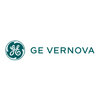Filter interviews by
Suzlon Group Mechanical Maintenance Engineer Interview Questions and Answers
10 Interview questions
Gear boxes are used to transmit power from one component to another while changing the speed and torque of the output.
Gear boxes allow for speed and torque conversion between input and output shafts
They provide mechanical advantage by increasing or decreasing speed and torque
Used in various applications such as automobiles, industrial machinery, and power transmission systems
Aviation lamps are used in wind turbine generators (WTG) for aircraft safety and navigation purposes.
Aviation lamps help to make the wind turbine visible to aircrafts, reducing the risk of collisions.
They also aid in navigation by marking the location of the wind turbine for pilots.
The use of aviation lamps is a regulatory requirement to ensure air traffic safety around wind turbines.
Different colors of aviation l...
Yes, generator alignment is crucial for efficient operation and preventing damage.
Generator alignment ensures that the rotating parts are properly positioned to prevent vibration and wear
Improper alignment can lead to increased maintenance costs and reduced efficiency
Alignment methods include laser alignment, dial indicators, and alignment jigs
Regular alignment checks should be performed to ensure optimal performa...
Fluid couplings are used to transmit power from one shaft to another without direct physical contact, allowing for smooth start-ups and overload protection.
Fluid couplings help in gradual acceleration of heavy machinery, reducing stress on the equipment
They provide overload protection by slipping when the torque exceeds a certain limit
Fluid couplings dampen torsional vibrations, reducing wear and tear on the machi...
Wind Turbine Generators (WTG) generate electricity through the conversion of wind energy into mechanical energy and then into electrical energy.
Wind turns the blades of the turbine
Blades are connected to a rotor
Rotor spins a generator to produce electricity
Electricity is then sent to a transformer for distribution
Example: Vestas V164-9.5 MW wind turbine
Various types of gears can be used in a gearbox depending on the application, such as spur gears, helical gears, bevel gears, and worm gears.
Spur gears are commonly used in applications where simplicity and cost-effectiveness are important.
Helical gears are used when smooth and quiet operation is required.
Bevel gears are used to transmit motion between intersecting shafts.
Worm gears are used for high reduction rat...
Tensioning involves stretching a fastener to a specific load, while torqueing involves tightening a fastener to a specific torque value.
Tensioning is typically used for critical applications where precise load control is required.
Torqueing is more commonly used in general applications where a specific torque value is sufficient.
Tensioning is often used in applications like bolted joints in bridges or aircraft stru...
Two stroke engines have power strokes every revolution, while four stroke engines have power strokes every other revolution.
Two stroke engines have a simpler design with fewer moving parts compared to four stroke engines
Two stroke engines require a fuel-oil mixture for lubrication, while four stroke engines have a separate oil reservoir
Two stroke engines produce more pollution due to incomplete combustion, while f...
The main reason for gearbox failure is lack of lubrication, leading to increased friction and wear.
Lack of proper lubrication causing increased friction
Contamination of lubricant with dirt or debris
Overloading the gearbox beyond its capacity
Improper maintenance and servicing
Manufacturing defects or poor quality materials
Incorrect alignment of gears
Types of gearboxes include spur, helical, bevel, worm, planetary, and cycloidal.
Spur gearbox: simple and efficient, used in low-speed applications
Helical gearbox: smoother operation, higher load capacity
Bevel gearbox: used for right angle drives
Worm gearbox: high reduction ratios, self-locking feature
Planetary gearbox: compact design, high torque transmission
Cycloidal gearbox: high shock load capacity, low backlas...
Suzlon Group Mechanical Maintenance Engineer Interview Experiences
2 interviews found
I applied via Walk-in and was interviewed before Nov 2022. There were 2 interview rounds.

(10 Questions)
- Q1. Types of gearbox
- Ans.
Types of gearboxes include spur, helical, bevel, worm, planetary, and cycloidal.
Spur gearbox: simple and efficient, used in low-speed applications
Helical gearbox: smoother operation, higher load capacity
Bevel gearbox: used for right angle drives
Worm gearbox: high reduction ratios, self-locking feature
Planetary gearbox: compact design, high torque transmission
Cycloidal gearbox: high shock load capacity, low backlash
- Q2. What is difference between tensioning and torqueing
- Ans.
Tensioning involves stretching a fastener to a specific load, while torqueing involves tightening a fastener to a specific torque value.
Tensioning is typically used for critical applications where precise load control is required.
Torqueing is more commonly used in general applications where a specific torque value is sufficient.
Tensioning is often used in applications like bolted joints in bridges or aircraft structure...
- Q3. What is the main reason of gearbox failure
- Ans.
The main reason for gearbox failure is lack of lubrication, leading to increased friction and wear.
Lack of proper lubrication causing increased friction
Contamination of lubricant with dirt or debris
Overloading the gearbox beyond its capacity
Improper maintenance and servicing
Manufacturing defects or poor quality materials
Incorrect alignment of gears
- Q4. Difference between two stroke and four stroke engine
- Ans.
Two stroke engines have power strokes every revolution, while four stroke engines have power strokes every other revolution.
Two stroke engines have a simpler design with fewer moving parts compared to four stroke engines
Two stroke engines require a fuel-oil mixture for lubrication, while four stroke engines have a separate oil reservoir
Two stroke engines produce more pollution due to incomplete combustion, while four s...
- Q5. How WTG generate electricity
- Ans.
Wind Turbine Generators (WTG) generate electricity through the conversion of wind energy into mechanical energy and then into electrical energy.
Wind turns the blades of the turbine
Blades are connected to a rotor
Rotor spins a generator to produce electricity
Electricity is then sent to a transformer for distribution
Example: Vestas V164-9.5 MW wind turbine
- Q6. Why we use fluid coupling
- Ans.
Fluid couplings are used to transmit power from one shaft to another without direct physical contact, allowing for smooth start-ups and overload protection.
Fluid couplings help in gradual acceleration of heavy machinery, reducing stress on the equipment
They provide overload protection by slipping when the torque exceeds a certain limit
Fluid couplings dampen torsional vibrations, reducing wear and tear on the machinery
T...
- Q7. Why gear box use
- Ans.
Gear boxes are used to transmit power from one component to another while changing the speed and torque of the output.
Gear boxes allow for speed and torque conversion between input and output shafts
They provide mechanical advantage by increasing or decreasing speed and torque
Used in various applications such as automobiles, industrial machinery, and power transmission systems
- Q8. Did you know about generator alignment
- Ans.
Yes, generator alignment is crucial for efficient operation and preventing damage.
Generator alignment ensures that the rotating parts are properly positioned to prevent vibration and wear
Improper alignment can lead to increased maintenance costs and reduced efficiency
Alignment methods include laser alignment, dial indicators, and alignment jigs
Regular alignment checks should be performed to ensure optimal performance
Ex...
- Q9. Which gear is used in gearbox
- Ans.
Various types of gears can be used in a gearbox depending on the application, such as spur gears, helical gears, bevel gears, and worm gears.
Spur gears are commonly used in applications where simplicity and cost-effectiveness are important.
Helical gears are used when smooth and quiet operation is required.
Bevel gears are used to transmit motion between intersecting shafts.
Worm gears are used for high reduction ratios a...
- Q10. Why aviation lamp is use in wtg
- Ans.
Aviation lamps are used in wind turbine generators (WTG) for aircraft safety and navigation purposes.
Aviation lamps help to make the wind turbine visible to aircrafts, reducing the risk of collisions.
They also aid in navigation by marking the location of the wind turbine for pilots.
The use of aviation lamps is a regulatory requirement to ensure air traffic safety around wind turbines.
Different colors of aviation lamps ...
I applied via Walk-in and was interviewed in Apr 2022. There were 3 interview rounds.

(1 Question)
- Q1. Technical question and objectives question
Interview Preparation Tips
Top trending discussions






Interview questions from similar companies

I appeared for an interview in Mar 2017.
Interview Questionnaire
1 Question
- Q1. Questions about my current department like that which type system installed and which company.
Interview Preparation Tips
Experience: Within 1hrs interview is done and the interviewer is asked me about current system working function and problem and how to solve the problem.
Skills: Technical Questions

Interview Questionnaire
1 Question
- Q1. Power system

I applied via Referral and was interviewed in Feb 2021. There were 4 interview rounds.
Interview Questionnaire
1 Question
- Q1. What is a switch gears
- Ans.
Switch gears are electrical devices used to control, protect and isolate electrical equipment.
Switch gears are used in power distribution systems to control the flow of electricity.
They protect electrical equipment from damage caused by overloads, short circuits, and other faults.
Switch gears can be classified into low voltage and high voltage depending on the voltage level they operate at.
Examples of switch gears incl...
Interview Preparation Tips

I appeared for an interview in Sep 2024, where I was asked the following questions.
- Q1. What is buchholz relay in transformer.
- Ans.
A Buchholz relay is a safety device used in oil-filled transformers to detect faults and prevent damage.
Monitors gas accumulation and oil flow in transformers.
Triggers alarms or circuit breakers during faults.
Commonly used in large power transformers.
Example: Detects overheating or short circuits.
Helps in preventing catastrophic failures.
- Q2. Explain kvl ans kcl
- Ans.
KVL and KCL are fundamental laws in electrical engineering governing voltage and current in circuits.
KVL (Kirchhoff's Voltage Law) states that the sum of all voltages around a closed loop equals zero.
Example of KVL: In a series circuit with a 12V battery and two resistors (4Ω and 8Ω), the voltage drop across the resistors must equal 12V.
KCL (Kirchhoff's Current Law) states that the sum of currents entering a junction e...

Interview Questionnaire
1 Question
- Q1. Working of transformer
- Ans.
A transformer is an electrical device that transfers electrical energy from one circuit to another through electromagnetic induction.
Transformers work on the principle of electromagnetic induction
They have two coils, primary and secondary, wound around a common magnetic core
When an alternating current flows through the primary coil, it creates a magnetic field which induces a voltage in the secondary coil
The voltage in...

(2 Questions)
- Q1. What is your area of expertise?
- Ans.
My area of expertise is in power systems and renewable energy.
Specialize in designing and analyzing power systems
Experience with renewable energy sources such as solar and wind power
Knowledge of grid integration and energy storage technologies
- Q2. How are you manage team?
- Ans.
I manage my team by setting clear goals, providing support and resources, fostering open communication, and recognizing achievements.
Set clear goals and expectations for team members
Provide necessary support and resources for team to succeed
Foster open communication and encourage collaboration
Recognize and reward team achievements
Delegate tasks effectively based on team members' strengths and skills

I applied via Newspaper Ad
(2 Questions)
- Q1. Why we can't more efficiency in Boiler
- Ans.
Efficiency in boilers is limited due to various factors.
Incomplete combustion of fuel leads to energy loss
Heat loss through flue gases and radiation
Inefficient heat transfer due to scaling or fouling
Improper insulation leading to heat loss
Inadequate maintenance and tuning
Lack of advanced control systems
Design limitations and constraints
Fuel quality and composition
Operating conditions and load variations
- Q2. Why Turbine,s efficiency is less & so derive the efficiency equation
- Ans.
The efficiency of a turbine is less due to various factors such as friction, heat losses, and mechanical losses.
Friction between the moving parts of the turbine reduces its efficiency.
Heat losses occur due to the conversion of thermal energy into mechanical energy.
Mechanical losses include losses in bearings, seals, and other components.
Efficiency equation: Efficiency = (Useful output energy / Input energy) * 100%
Interview Preparation Tips

I applied via Approached by Company and was interviewed in Jul 2022. There was 1 interview round.
(2 Questions)
- Q1. Electrical question panel breaker HT breaker models HD panel LT breaker LT model circuit diagram motor relay contractor wiring hoist faster activator
- Q2. Electrical se sambandhit any question
Interview Preparation Tips
Suzlon Group Interview FAQs
Tell us how to improve this page.
Suzlon Group Interviews By Designations
- Suzlon Group Junior Engineer Interview Questions
- Suzlon Group Assistant Manager Interview Questions
- Suzlon Group Electrical Engineer Interview Questions
- Suzlon Group Engineer Interview Questions
- Suzlon Group Senior Engineer Interview Questions
- Suzlon Group Technician Interview Questions
- Suzlon Group Quality Engineer Interview Questions
- Suzlon Group Maintenance Engineer Interview Questions
- Show more
Interview Questions for Popular Designations
- Production Engineer Interview Questions
- Electrical Engineer Interview Questions
- Service Engineer Interview Questions
- Mechanical Engineer Interview Questions
- Maintenance Engineer Interview Questions
- Assistant Engineer Interview Questions
- Maintenance Manager Interview Questions
- Senior Electrical Engineer Interview Questions
- Show more
Overall Interview Experience Rating
based on 2 interview experiences
Difficulty level
Duration
Interview Questions from Similar Companies
Suzlon Group Mechanical Maintenance Engineer Reviews and Ratings
based on 21 reviews
Rating in categories
|
Electrical Engineer
582
salaries
| ₹2 L/yr - ₹5.1 L/yr |
|
Engineer
505
salaries
| ₹1.9 L/yr - ₹5.7 L/yr |
|
Junior Engineer
361
salaries
| ₹1.8 L/yr - ₹5.4 L/yr |
|
Senior Engineer
294
salaries
| ₹3.5 L/yr - ₹8 L/yr |
|
Assistant Manager
272
salaries
| ₹5.6 L/yr - ₹13 L/yr |

Adani Group

NTPC

Torrent Power

Tata Power
- Home >
- Interviews >
- Suzlon Group Interview Questions













